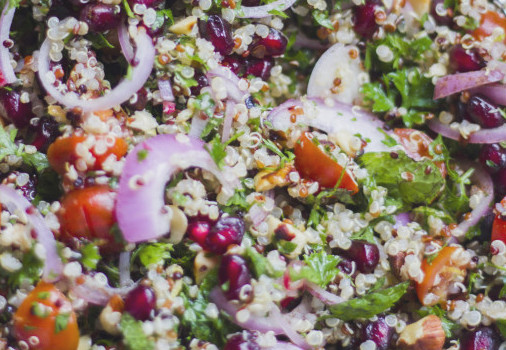My partner and I have lived in our house for over 4 years now, and in that time have managed to turn our small home and garden into a productive, beautiful, comfortable place to live. I am very lucky that Adam is a passionate gardener who is currently building his own business and who spends his free time making our garden gorgeous and providing me with lots of homegrown produce to cook with!
We tend to keep to our own hobbies, Adam in the garden and me in the kitchen, but this does not mean I haven’t learnt a lot about growing fruit and veg in the last few years. One of the things Adam has taught me a lot about is composting. Approximately 50% of the waste Australians are putting into their garbage bins could be being put to better use in the garden as compost or mulch with very little effort.
Composting Benefits
Soil conditioner: With compost, you are creating rich humus for lawn and garden. This adds nutrients to your plants and helps retain moisture in the soil.
Recycles kitchen and yard waste: Composting can divert as much as 30% of household waste away from the garbage can.
Introduces beneficial organisms to the soil: Microscopic organisms in compost help aerate the soil, break down organic material for plant use and ward off plant disease.
Good for the environment: Composting offers a natural alternative to chemical fertilizers.
Reduces landfill waste: Most landfills in North America are quickly filling up; many have already closed down. One-third of landfill waste is made up of compostable materials.
What to add in your compost bin:
Vegetable and fruit scraps, vegetable oil, prunings and lawn clippings, tea bags and coffee, grounds, vacuum dust, shredded paper and cardboard, used potting mix, egg shells, flowers.
What not to add in your compost bin:
Meat and bones, dairy products, diseased plants, metals, plastic and glass, animal manures, fat, magazines, large branches, weeds that have seeds or underground stems, sawdust from treated timber, pet droppings, synthetic chemicals.
1. Start your compost pile on bare earth. This allows worms and other beneficial organisms to aerate the compost and be transported to your garden beds.
2. Lay twigs or straw first, a few inches deep. This aids drainage and helps aerate the pile.
3. Add compost materials in layers, alternating moist and dry. Moist ingredients are food scraps, tea bags, seaweed, etc. Dry materials are straw, leaves, sawdust pellets and wood ashes. If you have wood ashes, sprinkle in thin layers, or they will clump together and be slow to break down.
4. Add manure, green manure ( clover, buckwheat, wheatgrass, grass clippings) or any nitrogen source. This activates the compost pile and speeds the process along.
5. Keep compost moist. Water occasionally, or let rain do the job.
6. Cover with anything you have – wood, plastic sheeting, carpet scraps. Covering helps retain moisture and heat, two essentials for compost. Covering also prevents the compost from being over-watered by rain. The compost should be moist, but not soaked and sodden.
7. Turn. Every few weeks give the pile a quick turn with a pitchfork or shovel. This aerates the pile. Oxygen is required for the process to work, and turning “adds” oxygen. You can skip this step if you have a ready supply of coarse material, like straw.
(more info at http://eartheasy.com/grow_compost.html )
Hazelnut Tabouli Recipe based on Life Changing Food by Jo Whitton & Fouad Kassab
- 1 cup cooked quinoa
- 1 cup toasted hazelnuts
- 1 pomegranate
- bunch parsley
- bunch mint
- 1/2 cup chopped cherry tomatoes
- 1 small red onion
- 1 tbsp lemon zest
- juice of 1 lemon
- 2 tbsp olive oil
- pinch salt
- Combine all ingredients in a large mixing bowl and serve immediately.












